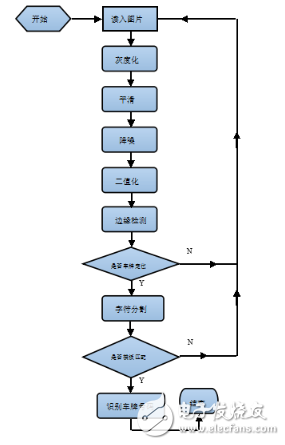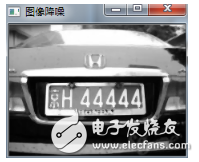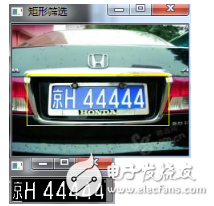With the rapid development of China's automobile industry, the number of vehicles on the road has increased dramatically over the years. This surge has placed significant pressure on traditional vehicle management and traffic control systems. To address these challenges, Automatic Vehicle Identification (AVI) technology emerged as a key solution, becoming an essential component of modern intelligent transportation systems. Based on computer vision, digital image processing, and pattern recognition, AVI captures images or video from cameras and processes them to extract license plate numbers, enabling efficient vehicle identification. With further processing, it supports various applications such as parking management, tracking of stolen vehicles, highway speed monitoring, red-light violation detection, and toll collection. These functions play a crucial role in enhancing traffic safety, maintaining urban security, preventing congestion, and achieving fully automated traffic management.
**1. Framework Process**
 **2. Smoothing**
**2. Smoothing**
 The first step in license plate localization is image preprocessing. To simplify calculations, the system typically converts the image into grayscale. Grayscale conversion involves transforming a color image into one where the red, green, and blue values are equal for each pixel, resulting in a range from 0 to 255. This simplification helps preserve important image features while making computation more efficient. In OpenCV, you can use the `cvSmooth` function with median filtering to reduce noise and improve image quality before further processing.
**3. Binarization**
Local adaptive binarization calculates a threshold for each pixel based on its surrounding area, rather than using a global threshold. This method adjusts the threshold dynamically, which makes it more suitable for environments with varying lighting conditions. The process involves determining the local maximum and minimum gray values within a window around each pixel and setting the threshold as the average of these two values. If the pixel value exceeds this threshold, it is considered part of the license plate region; otherwise, it is treated as background.
**4. License Plate Localization**
The first step in license plate localization is image preprocessing. To simplify calculations, the system typically converts the image into grayscale. Grayscale conversion involves transforming a color image into one where the red, green, and blue values are equal for each pixel, resulting in a range from 0 to 255. This simplification helps preserve important image features while making computation more efficient. In OpenCV, you can use the `cvSmooth` function with median filtering to reduce noise and improve image quality before further processing.
**3. Binarization**
Local adaptive binarization calculates a threshold for each pixel based on its surrounding area, rather than using a global threshold. This method adjusts the threshold dynamically, which makes it more suitable for environments with varying lighting conditions. The process involves determining the local maximum and minimum gray values within a window around each pixel and setting the threshold as the average of these two values. If the pixel value exceeds this threshold, it is considered part of the license plate region; otherwise, it is treated as background.
**4. License Plate Localization**
 Canny edge detection is widely used due to its ability to detect edges accurately while resisting noise. The algorithm follows several steps: first, noise is reduced using Gaussian filtering; next, the gradient magnitude and direction are calculated; then, non-maximum suppression is applied to thin the edges. Finally, hysteresis thresholding is used to determine which edges are strong enough to be retained.
For license plate positioning, a line scan technique is often employed. The license plate area has distinct characteristics, such as a high density of characters and a fixed size. By scanning the image row by row, we can detect transitions between black and white pixels, which help identify the region containing the license plate. Once the horizontal area is determined, vertical boundaries can be located by analyzing pixel transitions across the width of the license plate.
**5. Template Matching**
Canny edge detection is widely used due to its ability to detect edges accurately while resisting noise. The algorithm follows several steps: first, noise is reduced using Gaussian filtering; next, the gradient magnitude and direction are calculated; then, non-maximum suppression is applied to thin the edges. Finally, hysteresis thresholding is used to determine which edges are strong enough to be retained.
For license plate positioning, a line scan technique is often employed. The license plate area has distinct characteristics, such as a high density of characters and a fixed size. By scanning the image row by row, we can detect transitions between black and white pixels, which help identify the region containing the license plate. Once the horizontal area is determined, vertical boundaries can be located by analyzing pixel transitions across the width of the license plate.
**5. Template Matching**
 Template matching is used to recognize individual characters on the license plate. A pre-defined template of each character is compared with the segmented image region. This method helps in identifying the exact characters present on the license plate, completing the overall recognition process.
Template matching is used to recognize individual characters on the license plate. A pre-defined template of each character is compared with the segmented image region. This method helps in identifying the exact characters present on the license plate, completing the overall recognition process.




Advertising Screen,Digital Advertising Display Screens,Digital Advertising Screen,Digital Advertising Display
Guangdong Elieken Electronic Technology Co.,Ltd. , https://www.elieken.com